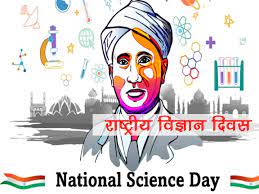02 Mar 2022 National Science Day (NSD)

National Science Day – Today Current Affairs
- In the same way the Prime Minister congratulated India’s scientific community on the occasion of National Science Day (February 28).
Key points
- National Science Day (NSD) is celebrated every year on 28 February to commemorate the discovery of the Raman Effect by Nobel Laureate and physicist CV Raman on this day in the year 1928.
- In the year 1986, the National Council of Science and Technology asked the Government of India to designate 28 February as NSD.
- Since 1987, this event has been celebrated all over the country in schools, colleges, universities and other academic, scientific, technical, medical and research activities.
- The purpose of celebrating this day is to increase scientific temper, popularize science and encourage innovative activities by promoting scientific temper among people and to create a positive scientific research culture.
- The nodal agency to support NSD is the National Council for Science and Technology Communication (NCSTC), Ministry of Science and Technology.
Today Current Affairs
Theme 2022: The Hindu Analysis
- “Integrated Approach in science and technology for Sustainable Future”.
- The theme focuses on a four-fold integrated approach to a sustainable future which includes:
- Extended scientific intervention, including engineering.
- Medical and other institutions.
- Additional scientific integration includes identification of needs of other ministries like Jal Shakti, Railways.
- Expanded science driven all-inclusive approach integrating startups and industry.
C.V. Raman: The Hindu Analysis
- Physicist Chandrasekhar Venkata Raman was born in Tamil Nadu.
- He was awarded the Nobel Prize in Physics in 1930 for his work in the field of light scattering.
- This phenomenon of light scattering was named as Raman Effect.
- In the year 1954, he was awarded the Bharat Ratna, India’s highest civilian award.
Raman Effect : The Hindu Analysis
- The Raman Effect is a scattering of photon particles by molecules that encourage higher vibrational or rotational energy levels. It is also called Raman scattering.
- In simple words, it is a change in the wavelength of light which is caused by the rays of light being deflected by the molecules.
- When a ray of light passes through a dustless and transparent sample of a chemical compound, a small portion of the light emerges in other directions than the direction of the incident ray.
- The wavelength of most of this scattered light remains unchanged. However, there is also a small part of the light whose wavelength is different from the wavelength of the incident light and its presence is a result of the Raman Effect.
- The Raman Effect forms the basis of Raman spectroscopy, which is used by chemists and physicists to obtain information about materials.
- Spectroscopy is the study of the interaction between matter and electromagnetic radiation.


No Comments